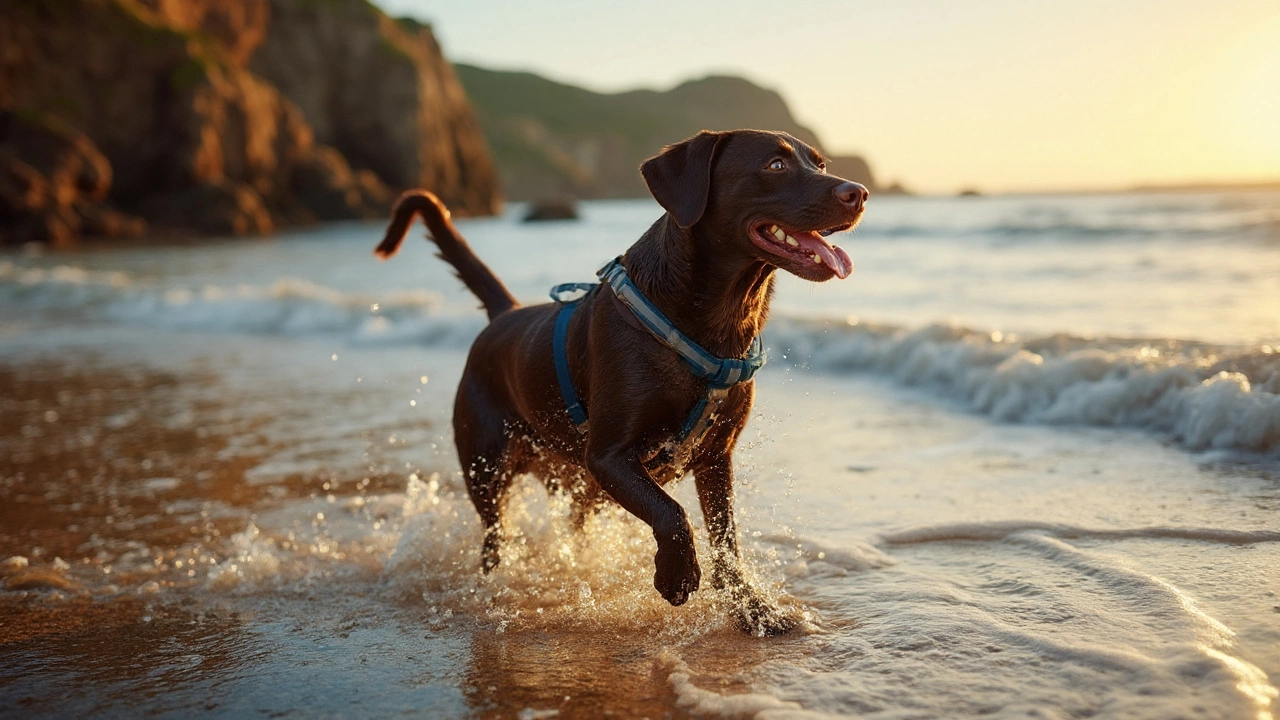Dog Travel: Practical Tips for Flying, Driving, and Beach Getaways
Thinking about taking your pup on a road trip or a flight? It can feel overwhelming, but with a few simple steps you’ll be ready for smooth sailing (or flying). Below you’ll find the basics you need to pack, plan, and enjoy a hassle‑free adventure with your dog.
Before You Book – Check Policies and Prepare Paperwork
First thing’s first: look up the airline’s pet policy. Each carrier has its own size limits, fee structure, and health‑certificate rules. Most UK airlines require a recent vet check (usually within 10 days) and a pet passport if you’re traveling abroad. Write down the exact crate dimensions they accept and compare them with your dog’s crate. If the crate is too big, you’ll need to get a new one – no shortcuts here.
For road trips, the paperwork is simpler but still important. Make sure your dog’s microchip details are up to date, and carry a copy of their licence if you’re driving across the UK. A quick call to your vet for a travel‑safety check can spot hidden health issues before they become problems on the road.
Packing Essentials – What to Put in Your Dog Travel Kit
Pack a small, portable bag with these must‑haves: a collapsible water bowl, a few days’ worth of regular food, any medication, a leash, waste bags, and a favorite toy or blanket. The familiar scent of a blanket can calm a nervous pup during a flight or a long car ride.
Don’t forget a copy of the health certificate, vaccination records, and your dog’s ID tags. If you’re flying, label the crate with your contact info and a ‘Live Animal’ sticker – airlines sometimes require this.
When driving, keep the crate or harness securely fastened in the back seat. Dogs love to look out the window, so a seat‑back protector with a small opening can let them enjoy the view without risking safety.
Flying With Your Dog – How to Make It Smooth
Most airlines let small dogs travel in the cabin if the crate fits under the seat. This is the least stressful option for both of you. Arrive at the airport early, so you have time to check in the crate and settle your pup before boarding.
Give your dog a light meal a few hours before the flight – a full stomach can cause nausea. Offer water right up to boarding, then a little more once you’re on the plane. During take‑off and landing, a chew toy or bone can help equalise ear pressure.
If your dog must travel in the cargo hold, choose a direct flight to avoid extra handling. Ask the airline about temperature control and the loading process. Once you land, head straight to the baggage claim area for pets – many airports have a designated pet relief area.
Road Trips and Beach Days – Staying Safe on Land
Plan regular stops every two to three hours. Let your dog stretch, drink water, and have a quick potty break. A short walk around a rest area burns off excess energy and reduces anxiety.
When you hit the beach, check local rules first. Some beaches allow dogs year‑round, while others have seasonal bans. Keep your dog on a leash unless it’s a designated off‑leash zone, and bring a bucket of fresh water – salt water isn’t good for their stomachs.
Apply pet‑safe sunscreen on exposed skin if your dog has thin fur or white patches. After a day in the sun, rinse off any sand and dry them thoroughly to prevent irritation.
With these basics in place, you’ll feel confident taking your dog wherever you want to go. Remember: a bit of prep goes a long way, and your dog will love the adventure just as much as you do.
Posted By Bryndle Redding On 21 Sep 2025 Comments (0)
Do Dogs Enjoy Going on Holiday? Science, Signs, and Stress‑Free Travel
Do dogs actually enjoy holidays? Learn the science, signs your dog is happy, travel prep, when to leave them home, and how to plan a low‑stress, fun trip.
READ MORE